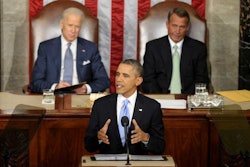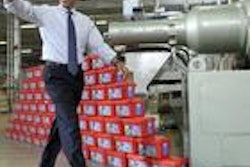WASHINGTON (AP) -- Federal Reserve officials agonized throughout 2008 over how far they could go to stop a financial catastrophe that threatened to pull the economy into a deep recession, transcripts of the Fed's policy meetings that year show.
"We're crossing certain lines. We're doing things we haven't done before," Chairman Ben Bernanke said as Fed officials met in an emergency session March 10 and launched never-before-taken steps to lend to teetering Wall Street firms. "On the other hand, this financial crisis is now in its eighth month, and the economic outlook has worsened quite significantly."
The crisis had been building for months. In an emergency conference call Jan. 21, Bernanke had rallied support for a deep cut in interest rates. He warned that market turmoil showed investors' growing concerns that "the United States is in for a deep and protracted recession."
Bernanke apologized to his colleagues for convening the call on the Martin Luther King holiday. But he said he felt that the urgency of the crisis required the Fed to act before its regularly scheduled meeting the next week. The Fed approved a cut of three-fourths of a percentage point in its benchmark for short-term rates.
On Friday, the Fed released hundreds of pages of transcripts covering its 14 meetings during 2008 — eight regularly scheduled meetings and six emergency sessions. The Fed releases full transcripts of each year's policy meetings after a five-year lag.
The 2008 transcripts cover the most tumultuous period of the financial crisis, including the collapse and takeover of investment bank Bear Stearns in March of that year.
In September, the crisis erupted with full force. The government took over mortgage giants Fannie Mae and Freddie Mac and allowed investment bank Lehman Brothers to collapse in the largest bankruptcy in U.S. history.
Also in September, the Fed bailed out insurance giant American International Group with $85 billion in support.
The transcripts reveal the internal arguments Bernanke deployed to marshal support for unorthodox policy actions — including from Janet Yellen, who succeeded Bernanke this month as Fed chair. At the time, Yellen was head of the Fed's San Francisco regional bank.
At an Oct. 28-29 Fed meeting, Yellen noted the dire events that had occurred that fall. With a nod to Halloween, she said the Fed had received "witch's brew of news."
"The downward trajectory of economic data," Yellen went on, "has been hair-raising— with employment, consumer sentiment, spending and orders for capital goods, and homebuilding all contracting." Market conditions had "taken a ghastly turn for the worse," she said. "It is becoming abundantly clear that we are in the midst of a serious global meltdown."
Yellen said she had downgraded her economic outlook and was projecting a recession, with four straight quarters of declining growth. The recession was later determined to have started in December 2007. It lasted until June 2009.
The Fed's efforts failed to contain the damage from the financial crisis failed to prevent the recession from becoming the worst since the 1930s. But Fed officials and many economists have argued that without the its efforts, the Great Recession could have been more catastrophic, perhaps rivaling the Great Depression of the 1930s.
The Fed's efforts to deal with the fallout from a collapsing housing bubble and subprime mortgage crisis had begun in 2007. The Fed cut a key short-term rate three times that year. The cuts totaled a full percentage point and took the rate from 5.25 percent to 4.25 percent at the end of 2007.
Then, at an emergency meeting on Jan. 22, 2008, the Fed slashed the rate again by three-fourths of a percentage point, responding to a plunge in global stock markets that had heightened fears of a recession. It marked the first time the Fed had changed rates between regularly scheduled meetings since 2001, when it was trying to cushion the economy from the shocks of the Sept. 11 terrorist attacks.
By the end of 2008, the Fed made eight rate cuts, leaving the funds rate on Dec. 16 of that year at a record low near zero. It remains at that level today. Many economists don't think the Fed will start raising rates until late 2015 at the earliest.
The Fed that year also launched other never-before-tried programs to get money flowing to parts of the economy that were struggling to get credit.
Fed policymakers fretted over the unprecedented steps they were taking. Jeffrey Lacker, president of the Fed's Richmond regional bank, worried at the March 10 meeting about a plan to lend Treasurys to Wall Street firms in exchange for mortgage bonds.
"This proposal crosses a bright line that we drew for ourselves in the 1970s in order to limit our involvement in housing finance," Lacker said.
But Timothy Geithner, then president of the New York Fed, countered that the Fed was a stronger institution than in the '70s: "We have the ability to decide what we think is enough and what line we're not prepared to cross, and we should be confident that we're willing to draw that line ... we need to be flexible and creative in the face of what are really extraordinary challenges."
AP Business Writers Christopher S. Rugaber and Marcy Gordon contributed to this report.


















